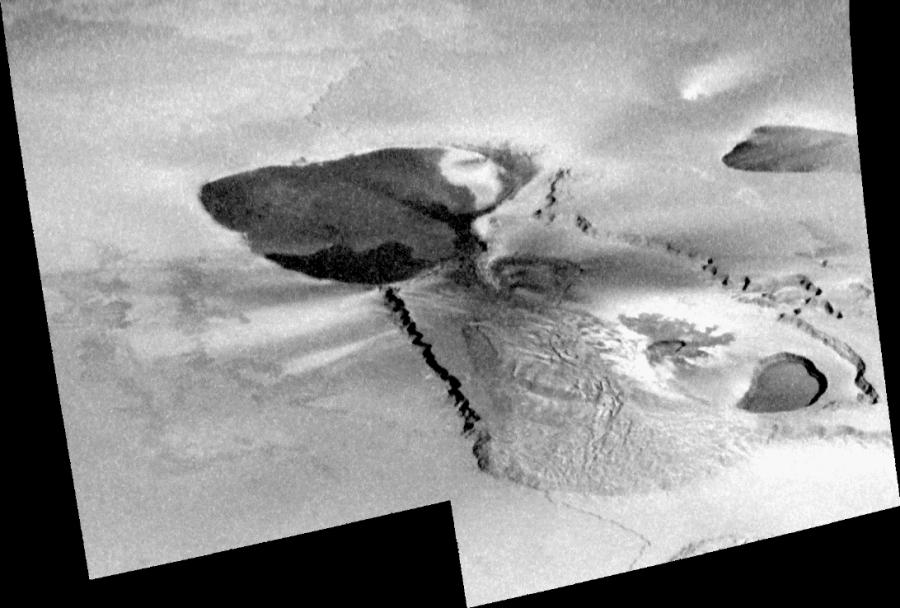

This mosaic of Tvashtar Catena (a chain of volcanic craters) on Jupiter's moon Io was taken by NASA's Galileo spacecraft on 16 October 2001. The observation completes a series of high-resolution views of the region obtained by Galileo over a period of 20 months. This image and the others from November 1999, February 2000, December 2000 and August 2001 were all taken to study aspects of this ever-changing, extremely active volcanic field. Tvashtar is pictured here just ten months after both the Galileo and Cassini spacecraft observed the eruption of a giant plume of volcanic gas emanating from the center of Tvashtar, which rose to 385 kilometers (239 miles) in height and blanketed terrain as far as 700 kilometers (435 miles) from its center.
Streaks of light and dark deposits can be seen radiating from the central patera (volcanic crater), remnants of the now finished plume eruption. Tvashtar has exhibited a variety of eruption styles over the course of almost two years: (1) a 50 kilometer (30 mile) long lava curtain in the center patera, (2) a giant lava flow or lava lake eruption in the giant patera at far left, and (3) a large plume eruption. Therefore Galileo scientists expected that the lava flow margins or patera boundaries within Tvashtar would have changed drastically. However, the series of observations revealed little modification of this sort suggesting that the intense eruptions at Tvashtar are topographically confined.
North is to the top of the mosaic which is approximately 300 km across and has a resolution of 200 meters (125 miles) per picture element.
Image produced by: Jani Radebaugh, Planetary Image Research Lab. (PIRL), Lunar and Planetary Lab. (LPL), University of Arizona
The Jet Propulsion Laboratory, a division of the California Institute of Technology in Pasadena, manages the Galileo mission for NASA's Office of Space Science, Washington, D.C. Additional information about Galileo and its discoveries is available on the Galileo mission home page at http://galileo.jpl.nasa.gov/. Background information and educational context for the images can be found at http://galileo.jpl.nasa.gov/images/io/ioimages.html.
NASA's Planetary Photojournal PIA-03529
May 28, 2002